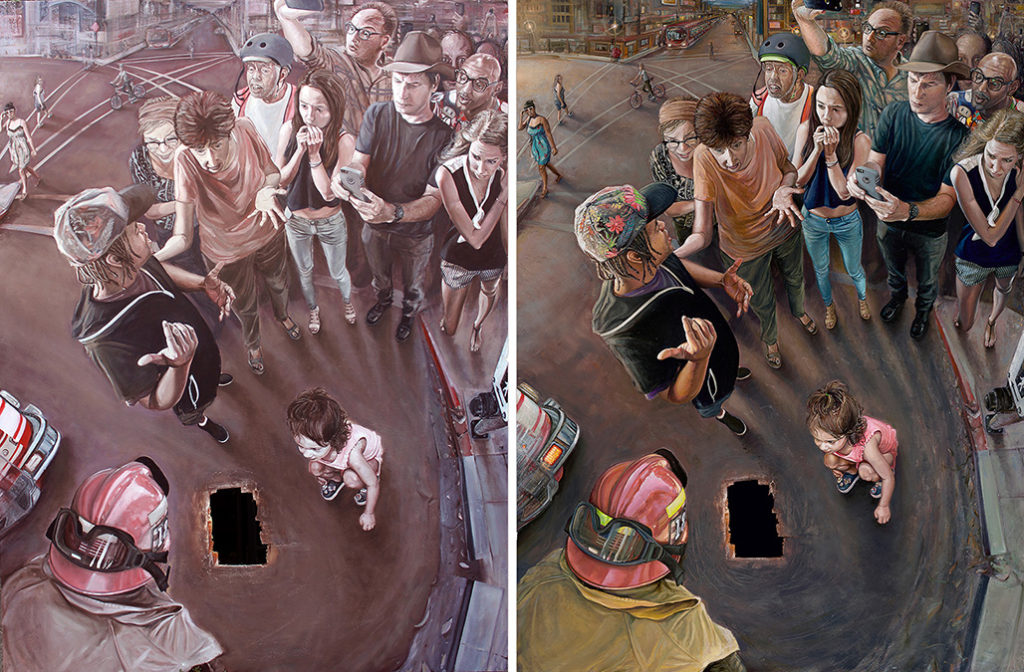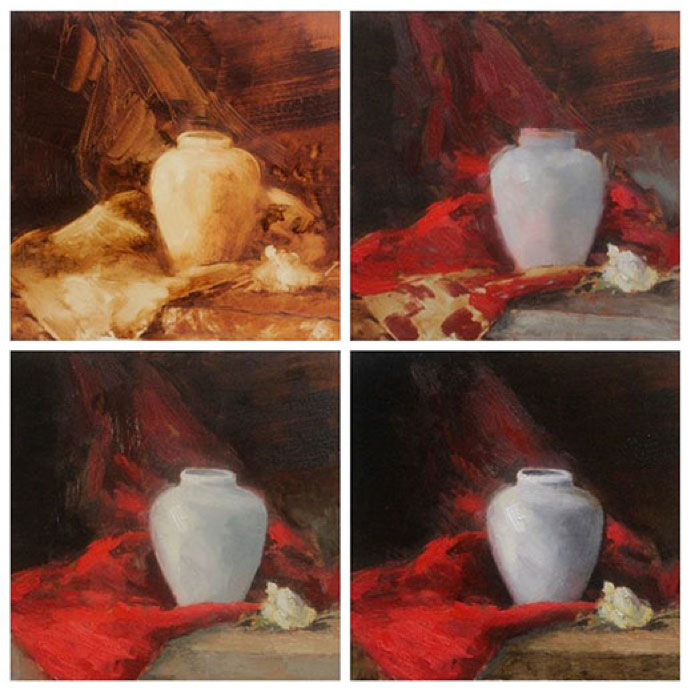Underpainting is central to planning the painting’s composition in traditional, indirect painting techniques. With few colors, a tonal foundation can effectively and quickly establish the painting’s value scheme. Colors such as Transparent Earth Red, Yellow Ochre, Raw Umber, and Titanium White are well-suited for this technique. Earth colors have been widely used for underpainting in oils because they dry quickly, due to their iron content, and more matte, due to their large particle size.

Artist Timothy Robert Smith builds his base underpainting (left) to establish values.
Ground Layers
The history of oil paintings has taught us that “like materials” are best used within the structure of a painting – the simpler the construction of the painting, the better its permanence. Therefore, the use of an oil-based color for underpainting is preferred over using a color of a totally different binder, such as acrylics.
The Ground is the foundation of an oil painting. Gamblin Oil Painting Ground makes a strong, bright, non-absorbent foundation for oil paintings. The lower absorbency of the Ground, compared to acrylic “gesso,” is important for painters working in reductive underpainting techniques – wiping away to the white of the ground layer.
For painters interested in working on colored grounds, any oil color or Pigment can be added to tint Ground.
Underpainting mixtures
We recommend extending oil colors with a mixture of solvent and binder, rather than solvent alone. Thinning with only solvent will make oil colors too “lean” which may prevent proper adhesion and permanence of paint layers. To thin colors for underpainting, we recommend a 50/50 mixture of Galkyd and Gamsol. This mixture, used in moderation, thins colors without slowing dry-times or significantly increasing gloss.

